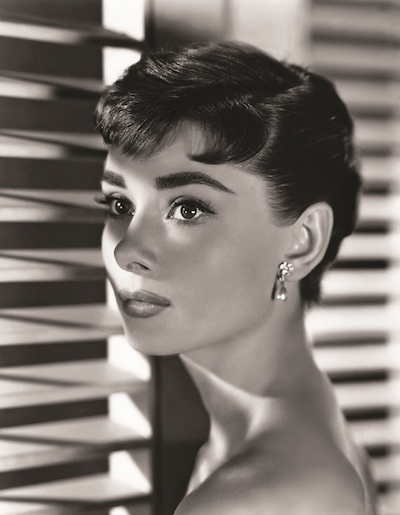Art and photography are wonderful windows to the world through which we are able to see things in new, often unexpected ways. These five books all contain intriguing stories about a variety of artistic visions and are certain to delight any lucky recipients this holiday season.
You can’t help but cheer for Brandon Stanton, creator of Humans of New York, a book that has drawn lots of recent attention. In 2010, after losing his job as a bond trader, Stanton decided to become a photographer, despite his lack of formal training. When the Georgia native went to New York City for the first time, he started an online photo album called “Humans of New York” (HONY). His album eventually morphed into a popular Tumblr blog, as he began pairing his portraits with brief stories or quotations from those he encountered.
This book, a compilation from his blog, is a fascinating tapestry of Big Apple personalities. A sveltely dressed defense lawyer holds his dog and says, “I always work my dog’s name into my closing argument.” A teenage boy in shorts says, “A kid wore shorts to school yesterday and the headmaster got really mad, so today the whole class wore them.” An incredibly frail man in a wheelchair turns out to be Banana George, who at age 92 set a world record as the oldest person to water-ski barefoot.
Stanton presents a colorful panorama of fashion and style, tattoos, wild shoes, Rollerblades, bikes, skateboards, hand holding, kisses, costumes, undying family devotion, babies, kids, old folks, visitors from afar, dancers, artists, dogs, performers and more.
A GLOBAL VISION
Sometimes a photograph becomes so embedded in our brains that we yearn to know the rest of the story. Award-winning photojournalist Steve McCurry takes readers on an amazing global journey in Untold: The Stories Behind the Photographs. In 1978, McCurry left his job as a photographer at a Philadelphia newspaper and headed to India with a one-way ticket, his camera and film. Before long, he found himself dressed in native garb and sneaking over the border into war-torn Afghanistan. The rest of his journey has been prolific, earning him the Robert Capa Gold Medal for exceptional courage and enterprise in photographic reporting from abroad.
McCurry is best known for his portrait, The Afghan Girl, taken of a green-eyed schoolgirl in a refugee camp in Pakistan, used on the cover of National Geographic in June 1985. The child’s piercing gaze is haunting, and it became one of the most recognizable photographs in the world. One chapter of this book tells the story of that particular expedition, and a remarkable follow-up in 2002, when McCurry returned to Pakistan to find his memorable subject, now married and a mother.
This is a book suitable for both browsing and focused reading. Other chapters recount, for instance, McCurry’s September 11 experiences in New York City, as well as trips to Tibet, India, Kuwait, Kashmir, Cambodia and more. Portraits of Tibetan children are intensely beautiful, and McCurry is haunted by his experiences in Vietnam, where he traveled in 2007 to photograph a father suffering from AIDS and tuberculosis in a remote village. McCurry reflects: “I hope my photographs will inform people and inspire them, and in some way help those people who have been gracious enough to allow me into their lives.”
ARTISTIC TREASURES
Art Is . . . is a little book in which the Metropolitan Museum of Art tries to tackle a big question: What is art? Nearly 200 artworks from the museum’s collection are paired with simple observations about the nature of art. For example, the words Art is advertisement are paired with a colorful 1880s ad for baking powder that features circus elephants and a clown. Art is woven is exemplified by a 15th-century tapestry of a unicorn. John Singer Sargent’s striking portrait of Madame X shows that art can be provocative. People of all ages will enjoy browsing through these lovely pages, and the small format makes the book all the more inviting—and the perfect stocking stuffer.
AMERICA’S ARTIST
For many, Norman Rockwell’s paintings represent the epitome of American homespun goodness: moments big and small, sad and triumphant, filled with Boy Scouts, policemen, soldiers, doctors, grandmothers and all sorts of grinning, gangly kids. Biographer and art critic Deborah Solomon has written a comprehensive new biography of the master artist, American Mirror: The Life and Art of Norman Rockwell. Ten years in the making, the book is a fascinating look at a man who was himself depression-prone, anxiety-ridden, obsessive and lonely, despite his three wives and three sons. Though Rockwell wasn’t an athlete himself, he seemed to prefer the company of physically strong men, a topic that Solomon delicately explores.
Born in New York City in 1894, Rockwell was likely dyslexic and immersed himself in his drawings at an early age. His first cover for the Saturday Evening Post was published in 1916. It was well received, and he became a regular contributor. Sadly, the happy scenes he painted weren’t from his own life. In 1948, for instance, he painted a cover called Christmas Homecoming, in which all five members of his family appeared. In reality, he was living in Hollywood for a few months while his wife was in Vermont. Rockwell is a beloved figure in American art, and Solomon’s compelling portrait offers the attention and insight that this complex man deserves.
A LIFE OF BEAUTY & DESIGN
Equally comprehensive is Eva Zeisel: Life, Design, and Beauty by Pat Moore. Less immediately recognized than Rockwell, Zeisel (1906-2011) was a highly influential ceramicist whose stylish designs revolutionized American dinnerware in the 1940s and 1950s. Born in Hungary, she evolved from a pottery artist into an industrial designer when a German manufacturer hired her to design tableware in 1928. After being unjustly imprisoned for 16 months in Russia after a colleague falsely accused her of being part of a conspiracy to assassinate Stalin, Zeisel immigrated to the U.S. in 1938.
The works from Zeisel’s long, prolific career are not only beautiful, but also practical and useful. Her line of “Museum” dinnerware was exhibited at the Museum of Modern Art in 1946, the institution’s first show devoted to a woman designer. Crate and Barrel has sold her designs, and her ceramics, furniture, rugs and lighting can be found in a variety of museums around the world. Zeisel was a pioneer in bringing well-made, well-designed and affordable items to the marketplace. This volume is a loving look at both her life and her work, with stunning photographs that beautifully showcase Zeisel’s creations.
































